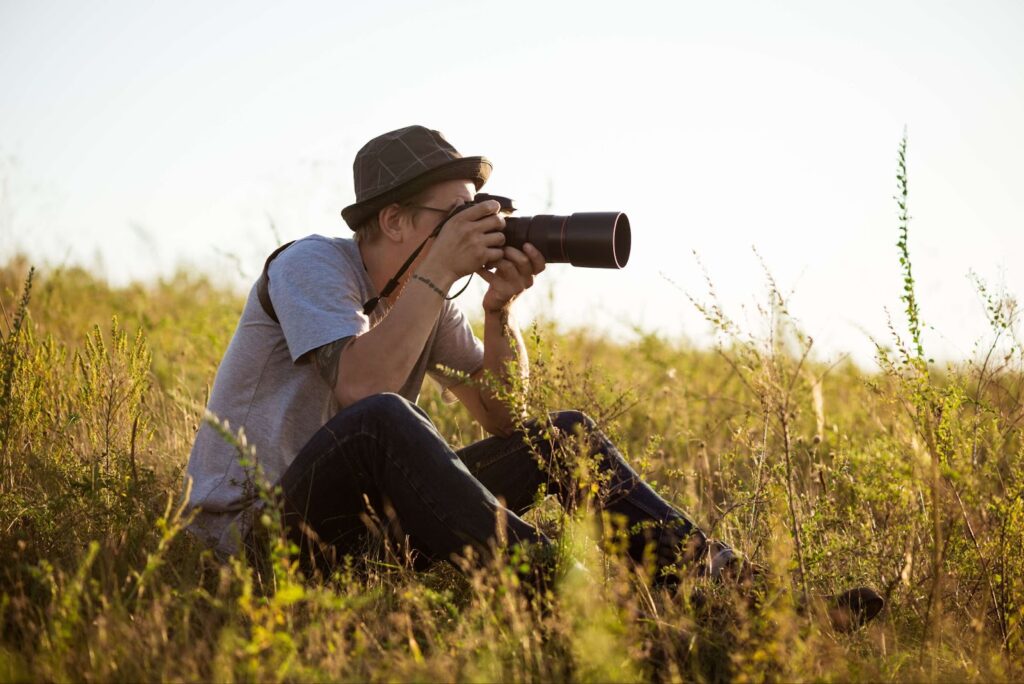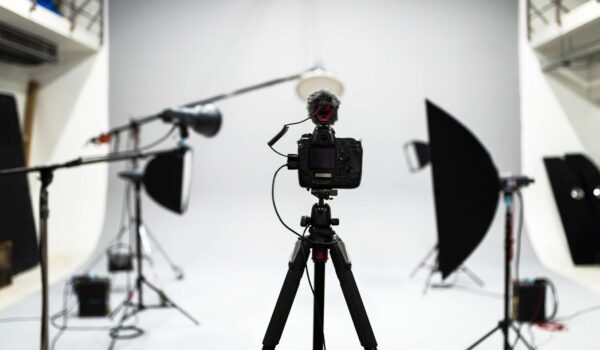Welcome to the world of photography, where creativity and technique blend seamlessly to produce stunning images. One indispensable tool that every photographer should have in their arsenal is the humble yet powerful reflector. Whether you’re a seasoned professional or a budding enthusiast, understanding the art of using reflectors will unlock a world of possibilities, adding depth, dimension, and that perfect touch of magic to your shots. Join us as we unravel the secrets behind effectively using reflectors to capture captivating and awe-inspiring photographs.
Unlock the Magic of Light with Photography Reflectors
In the enchanting world of photography, a reflector is a mesmerizing tool that holds the power to shape and harness the essence of light. Unlike a flash that creates a burst of brilliance, a reflector gracefully redirects existing light or even the radiant glow from a flash or studio strobe. Picture this: you’re capturing a stunning portrait during golden hour, and the reflector comes to life, mirroring the same warm, golden hues, transforming your subject into a celestial vision.
Delve into the Depths of Reflector Artistry:
A reflector, despite its bewitching abilities, can’t conjure light out of thin air. It operates in harmony with the ambient light, offering a gentle nudge to the luminosity that already surrounds your subject. So, while it magnifies existing light, it can’t single-handedly brighten a night portrait – combining it with a flash or other light source is the secret to illuminating those nocturnal wonders.
As a master of light manipulation, a photographer must recognize that the reflector’s magic lies in its chameleon-like quality. It mirrors the exact personality of the light present in the scene. Imagine a blissful sunset; the reflector will faithfully reflect that dreamy orange hue, bestowing a celestial touch to your photographs.
While reflectors are generally obedient emissaries of light, a few exceptions add a fascinating twist to the tale. These are the various types and colors of reflectors, each wielding unique properties to charm the photons bouncing their way:
Traditional White Reflector: The classic white reflector is like a gentle whisper, caressing the light and diffusing it with a soft touch. This type of reflector is perfect for creating a flattering, even illumination without altering the color temperature.
Shimmering Silver Reflector: For those craving a dash of extra brilliance, the silver reflector emerges as a radiant option. It retains the light’s natural color while boosting its intensity, adding a touch of vibrancy to your subjects.
Glorious Gold Reflector: If warmth and drama are on your wish list, the gold reflector shall grant it all. Infusing a delightful orange tone to the reflected light, this reflector harmonizes exceptionally well with warm-toned environments or portraits shot during the golden hours.
Five Essential Tips for Harnessing the Magic of Reflectors in Photography
While the concept of using a reflector may seem simple, there are hidden depths to explore to truly wield its power like a seasoned photographer. So, let’s dive into the secrets of using a reflector to elevate your photography to new heights!
Embrace the Dance of Light: Angle Matters
Reflectors are the virtuosos of light manipulation, but understanding how to position them can make all the difference in your shots. Here’s how to master the angles:
- Hold the reflector directly opposite the light source to achieve maximum brightness. The intensity of reflected light is at its peak when the reflector directly faces the light source;
- Experiment with different angles to find the perfect balance of light and shadows. Gently tilt the reflector and observe how the light changes on your subject. The key is to strike a harmonious chord between illumination and definition.
Banish Shadows: Use Reflectors as Shadow Tamers
Shadows can be enchanting, but sometimes they can cast a spell of unwarranted darkness on your subject. Enter the reflector, your shadow’s nemesis. Here’s how to wield it with prowess:
- For subjects backlit by a strong light source, position the reflector directly in front of them to prevent them from turning into silhouettes. This technique is especially valuable during golden hour shoots;
- If the light is coming from one side, deploy the reflector on the opposite side to fill in the shadows gently. This technique enhances the subject’s features and adds depth to your composition;
- When large objects obstruct the light, place the reflector strategically close to the object to bounce light onto the subject, creating a harmonious interplay of illumination.
Unleash Your Creativity: Explore Unconventional Angles
Photography is an art of exploration, and reflectors open up a world of creative possibilities. Embrace these innovative ideas to add flair to your shots:
- Don’t limit your reflector to just upright positions. Lay it on the ground in front of your subject during a portrait session to eliminate pesky under-eye shadows and create a unique, flattering look;
- Experiment with various surfaces as reflectors. A white foam board, a piece of aluminum foil, or even a mirror can bring exciting and unexpected results to your photography.
Utilize Reflector Stands
While the human touch can work wonders in holding a reflector, there are instances where you need more stability and precision. Welcome reflector stands to your gear repertoire:
- When you’re both the photographer and the model, getting the perfect angle can be tricky. Enlist the help of a friend or assistant to hold the reflector for you;
- Alternatively, use a reflector stand or prop it up against a sturdy surface to maintain the desired angle without any assistance. This method ensures you have full control over the lighting setup.
Distance Makes the Difference: The Softness of Light
As you venture further into the world of photography, you’ll discover that distance plays a vital role in shaping the quality of light. Keep these insights in mind:
- Larger light sources positioned closer to the subject create soft and flattering light. When the light is too harsh, bring the reflector closer to your subject to soften the shadows and create a more flattering look;
- Conversely, placing the reflector farther away from the subject produces harder light, which can add dramatic effects and strong contrasts to your images.
Four Reasons to Embrace the Magic of Reflectors in Photography
Amplify a Poor Light Source: Embrace the Power of Reflection
Redirecting Light with Precision: Reflectors boast a highly reflective surface that works wonders by redirecting and amplifying any available light source. Whether it’s natural light or LED photography lights, a reflector helps you maximize every glimmer of light to illuminate your subject beautifully.
Perfect for On-the-Go Shoots: Unlike bulky and cumbersome photo lightboxes, photography reflectors are portable and lightweight. They effortlessly slip into your photography gear, allowing you to carry them anywhere, making them a go-to solution for time-sensitive shoots when artificial lighting is a must.
Budget-Friendly Lighting Solution: Reflectors prove to be a budget-friendly alternative for those who don’t want to invest in expensive lighting equipment. By harnessing the power of reflection, you can enhance the lighting quality and bring your subjects to life without breaking the bank.
Diffuse Light to Paint Your Subjects with Subtlety
Softening Light with Diffusers: Unleash the magic of diffusers, often included with ‘5 in 1’ photography reflectors, to tame the intensity of harsh light sources. A diffuser evenly spreads the light passing through it, resulting in a gentle and flattering illumination that accentuates the beauty of your subjects.
Mastering Food and Fashion Photography: Diffusers become indispensable tools in the hands of food and fashion photographers. They provide that coveted soft and dreamy lighting effect, making the colors pop and the textures come to life. Say goodbye to unsightly glares and welcome a world of artistic finesse!

Unleash Your Creativity with Special Lighting Effects
Playing with Shadows and Focus: Imagine capturing an image where only a single object stands out in the darkness, or a portrait where only the eyes of the subject are in sharp focus. Reflectors open up endless possibilities for customization, enabling you to craft mesmerizing shots that evoke emotions and leave a lasting impact.
Indoor and Outdoor Magic: The versatility of reflectors knows no bounds. Whether you’re working on an indoor shoot or an outdoor project, these tools adapt effortlessly to various scenarios, helping you create breathtaking light settings and compositions that tell powerful visual stories.
Block Unwanted Light, Capture Nature’s Beauty
Creating Subtle Light for Wildlife: When you’re capturing wildlife in their natural habitat, the last thing you want is to disrupt the scene with intrusive light. Reflectors offer a more subdued and indirect source of illumination, keeping the animal subjects at ease while you work your magic behind the lens.
Bringing Nature’s Beauty to Life: Wildlife photographers can utilize reflectors to highlight the beauty of flora and fauna. Whether it’s accentuating the texture of leaves or enhancing the colors of a bird’s plumage, reflectors contribute to producing stunning and captivating wildlife imagery.
Choosing the Perfect Reflector: Four Key Considerations to Enhance Your Photography
Size Matters:
The size of your reflector plays a pivotal role in determining the characteristics of the light it produces. Larger reflectors create softer light, which helps to minimize harsh shadows, giving your subjects a more flattering and natural look. On the other hand, smaller reflectors tend to produce more intense and direct light, leading to harsher shadows that may not be desirable in certain situations.
Recommendation:
Opt for a 42″ reflector as it strikes a perfect balance between soft light and easy handling. This size offers you the versatility to achieve the desired lighting effects without being unwieldy or turning into a sail when shooting outdoors.
The Art of Shape:
Beyond their effect on light, reflector shapes can also influence the catchlights in your subject’s eyes. Catchlights are the reflections of light sources visible in a person’s eyes, adding depth and life to their gaze. The shape of your reflector will be mirrored in these catchlights, enhancing the overall aesthetics of your portraits.
Recommendation:
Consider reflectors with various shapes, such as circular, rectangular, or oval, and experiment with each to find the one that best complements your photography style. Circular reflectors often create more natural-looking catchlights, while rectangular ones may offer versatility in directing light precisely where you want it.
Colors of Creativity:
The color of your reflector affects not only the intensity of bounced light but also the mood and tone of your photographs. Different colors yield diverse results, allowing you to add warmth, coolness, or even unique visual effects to your images.
Recommendation:
Invest in reflectors with multiple colors, such as silver, white, and gold, or even opt for four-in-one reflectors that also include a black side for light-blocking purposes. This gives you the flexibility to adapt to various shooting conditions and creatively manipulate light according to your artistic vision. Remember, white reflectors provide soft, neutral light, while silver ones produce more intense and cooler tones. Gold reflectors add warmth to the light, making them ideal for portrait photography, especially in outdoor sunset shots.
Handle with Care:
The practicality and ease of using a reflector can greatly impact your photography experience. Reflectors with well-designed handles are more convenient to hold and position, ensuring that you can focus on capturing the perfect shot without struggling to manage your gear.
Recommendation:
Choose a reflector with sturdy and comfortable handles that make it easy to hold with one hand while adjusting your camera with the other. While more expensive reflectors may offer better build quality and longer-lasting materials, it’s crucial to strike a balance between price and functionality.
Conclusion
In conclusion, harness the power of reflectors to add depth, contrast, and dimension to your photographs. Embrace the process of learning and experimentation, and you’ll discover that mastering reflector usage is a game-changer for taking your photography to extraordinary new heights. So, grab your reflectors, head out into the world, and let your creativity shine with every click of the shutter.
